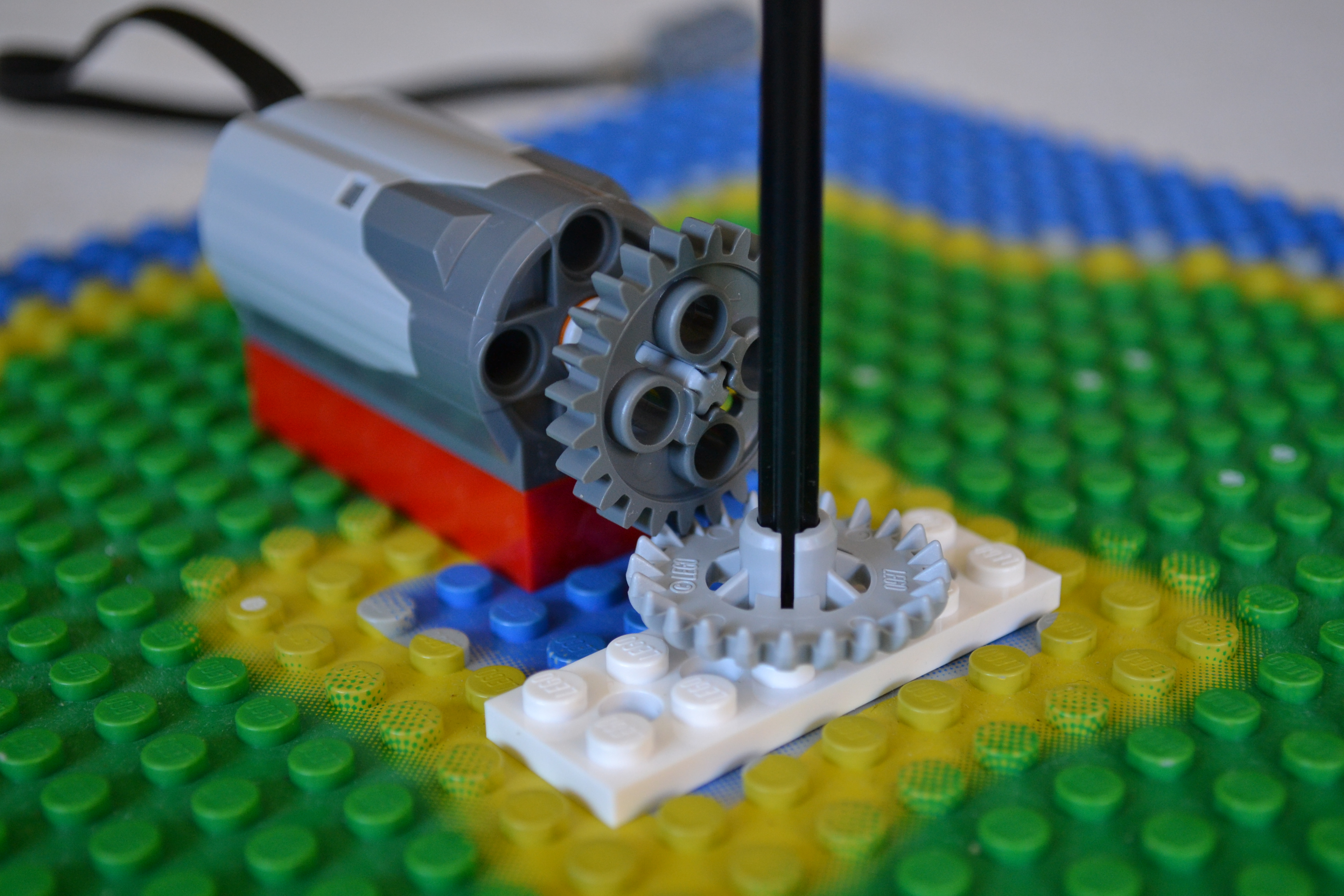I have built a series of Lego phonographs, but none as successful as this model. Based on an arm design by Jose Pino and using a Lego WeDo motor and the Scratch programming environment, my friends and I built a phonograph that played a record loudly enough to be heard across the room with no amplifier needed: just a nine ounce plastic drinking cup serving as the horn!
This particular phonograph is build from the programmable Lego WeDo Kit. The motor speed is programmed in Scratch, which interacts with the phonograph through a USB hub. You, of course, might already have all the bricks needed to build the phonograph and can purchase the Lego M-Motor and Lego USB Hub separately. This phonograph is by no means high-fidelity but provides the tool to play records from the $2 bin or other vinyl you do not mind damaging as you experiment with building Lego and programming in Scratch. You can use this phonograph to play records recorded at 33 1/3, 45, or 78 RPMs because the motor speed is controllable by the program you write!
Materials
- Vinyl record that you do not mind damaging
- Lego WeDo Kit Design ID 9580
- Lego Base Plate
- Lego USB Hub Design ID 9581
For the turntable:
- Lego Power Functions M-Motor Design ID 8883
- Lego 2×6 brick
- Lego Cross Axle 3M Design ID 4519
- Lego Bushing (2) Design ID 6590
- Lego Technic Gear 24 Tooth Design ID 3648
- Lego Cross Axle 8M Design ID 3707
- Lego Technic Gear 24 Tooth Crown Design ID 3650
- Lego 2×6 plate (2)
- Lego 1×2 brick (6)
- Lego Wheel 81.6 X 15 Design ID 2903/6596
- Lego Technic Wedge Belt Wheel (Pulley) Design ID 4185/70162
For the arm:
- Lego 2×6 brick (3)
- Lego 2×4 brick (4)
- Lego 2×8 plate
- Lego 2×6 plate (2)
- Lego Technic, Axle and Pin Connector Design ID 3651
- Lego Connector Peg/Cross Axle Design ID 6562
- Lego Technic, Pin Connector Plate 1x2x1-2/3 Design ID 32530
- Lego Turntable 2×2 plate
- Lego Cross Axle 12M Design ID 3708
- Lego Cross Axle Extension 2M Design ID 59443
- Lego Cross Axle 10M Design ID 3737
- Lego Technic Lever 3M Design ID 6632
For the horn:
- Fine grit sandpaper
- Sewing needle
- 9oz. plastic drinking cup
- Foam, cut into wedge and small square shapes such as Darico Foamies Foam Marshmallows
- Rubber band
- Paper towel or napkin
About the Author
Josh Burker works with elementary age students on constructivist technology projects at an independent school in Connecticut. He has been a Lego maniac since kindergarten.
Photos by Meghan Scheck




